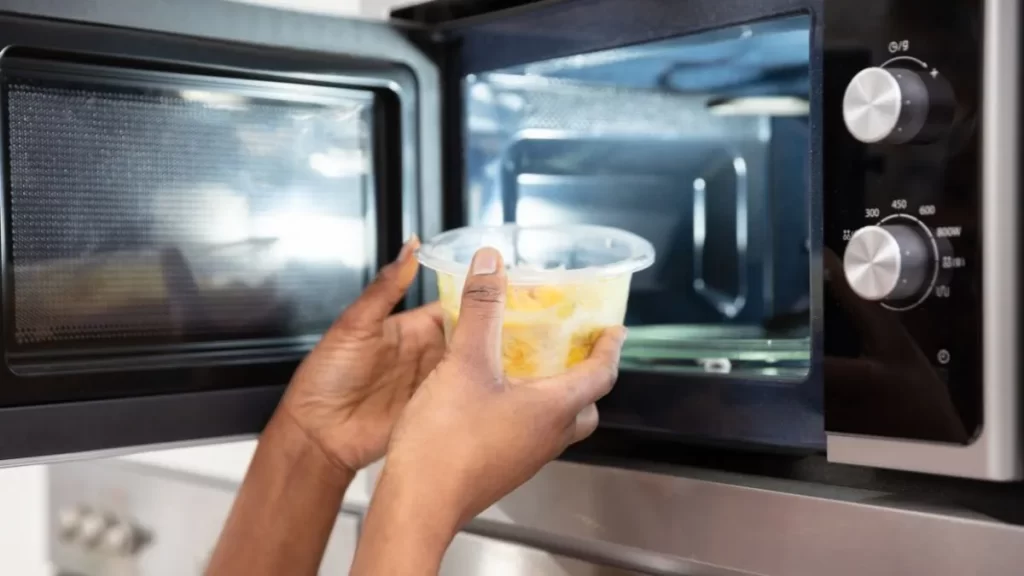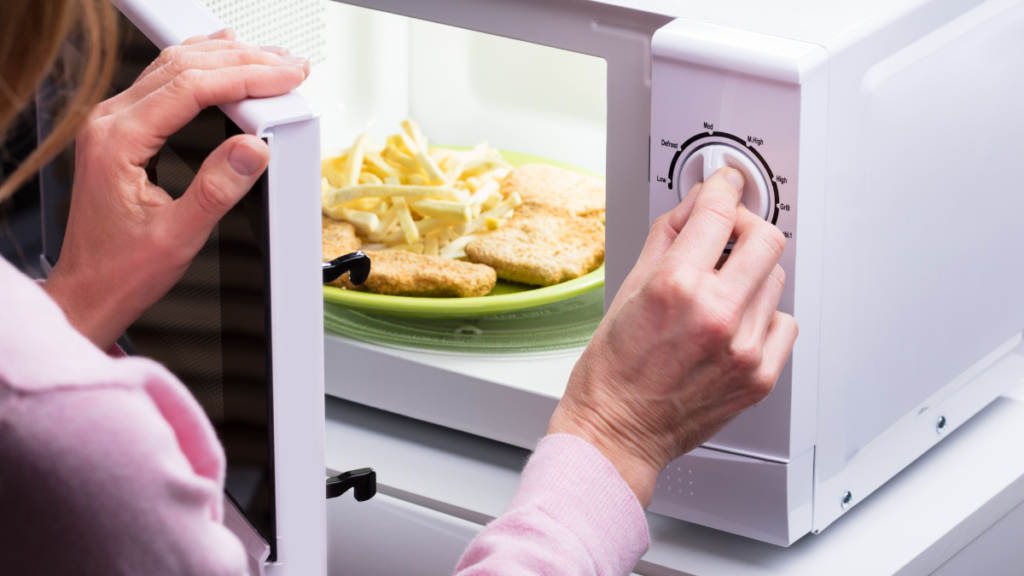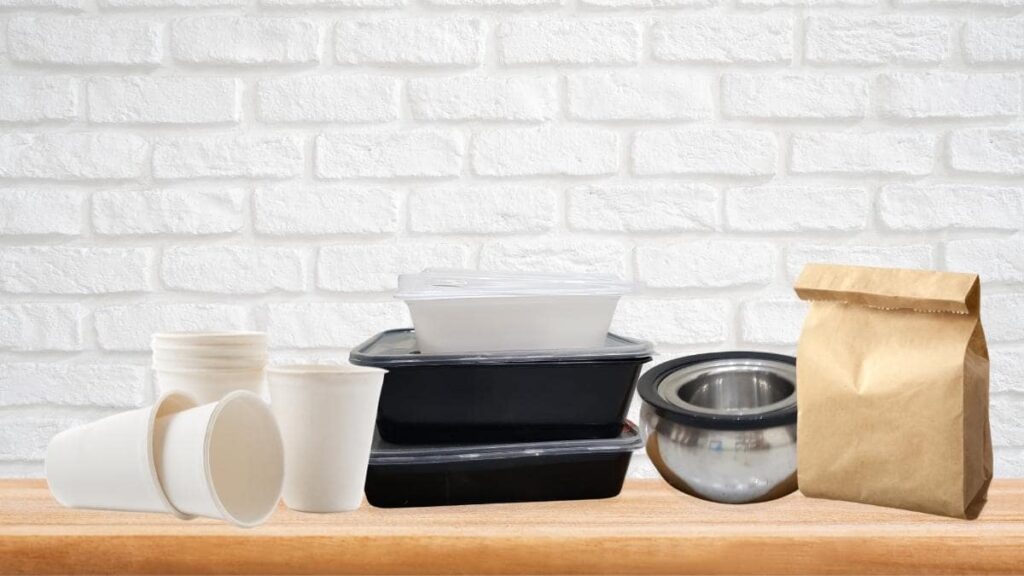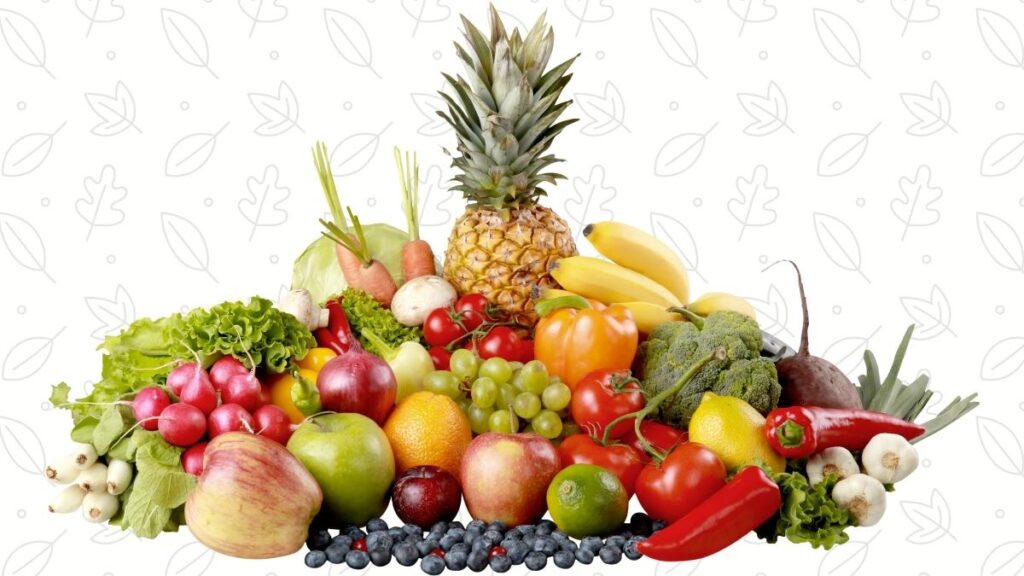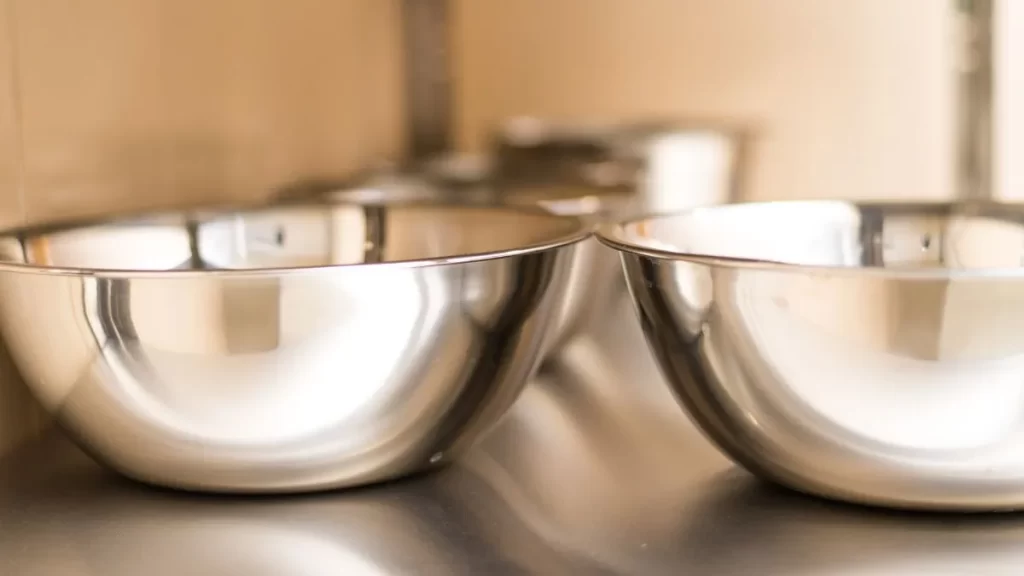Are all plastic containers made for cooking, heating, or reheating in the microwave?
Will I be able to microwave food safely in a plastic container?
How long can I safely microwave food in plastic containers?
Many such questions come to mind when microwaving food in a plastic container.
Well, the answer to these questions depends on the type of container that you are going to use. Also, this will differ from case to case.
In this article, we will discuss different types of plastic containers, which are microwave safe and which are not.
So keep reading if you want to know more on this matter.
Different Types Of Plastic Containers And Which Ones Are Microwave Safe
There are 7 types of plastic containers, and each has its own usage, but this does not mean every plastic can go into the microwave.
Let’s understand more about them and look at what the numbers on the plastic containers mean.
Type 1: Polyethylene Terephthalate
Polyethylene terephthalate, also known as PET or PETE, is a thermoplastic polymer resin used in many products.


It is often referred to as polyester in everyday use.
PET is used in fiber and textile applications, for example, clothing.
It’s also used in food packaging and plastic bottles.
It can be clear or colored and is often used to make plastic bottles like bottles for soft drinks, water, and juices, laundry detergent bottles, shampoo bottles, etc.
Type 1 plastic containers are not microwave safe because they melt easily and can leach chemicals into your food.
Type 2: High-Density Polyethylene
High-density polyethylene (HDPE) is a thermoplastic polymer with high tensile strength and impact resistance.
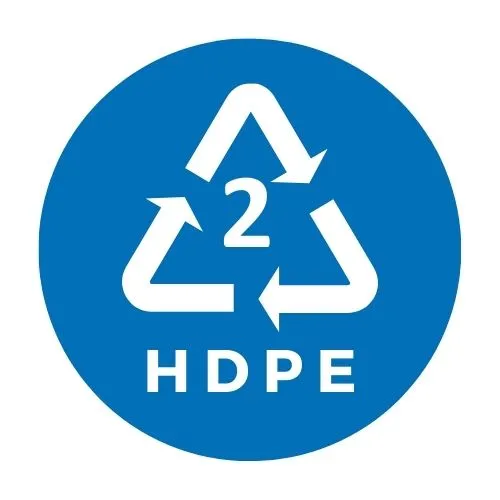

It’s strong, durable, and flexible, making it ideal for many uses.
HDPE is an economical alternative to other materials such as glass or metal when strength, durability, and chemical resistance are needed.
Because HDPE is highly resistant to corrosion and chemicals, it is often used for storing or transporting liquids and gases sensitive to other packaging materials.
It is used for making various products, including pipes, toys, bottles, plastic stools, ropes, milk jugs, benches, envelopes made of plastic, and other sturdy products.
Type 2 plastic containers are microwave safe only if the manufacturer approves it.
Please note that not all Type 2 plastic containers are microwave safe, so check the manufacturer’s instructions before putting them in the microwave.
Type 3: Polyvinyl Chloride
Polyvinyl Chloride (PVC) is the most commonly used plastic in the world.
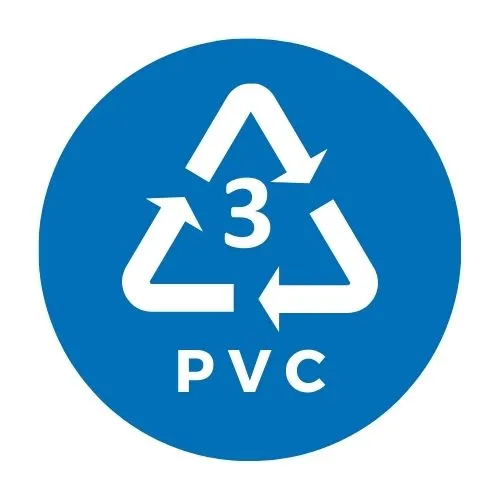

It is versatile and can be used for everything from pipes to medical equipment.
It became popular because it is cheap, lightweight, easy to use, and mold into different shapes by adding plasticizers.
Over time, other uses have been developed for PVC, including toys, packaging material, pipes, clothing, shoes, gloves, cable wires, window frames, construction materials, and even food containers.
Although PVC is a tough material and does not react with salt, oil, fats, alcohol, and other chemical compounds, and is weather and corrosion resistant as compared to other plastics, these Type 3 plastic containers are not microwave safe and you should never put them in the microwave for heating and reheating your food.
The plasticizers used in PVC plastic containers may migrate into your food and contaminate it.
Type 4: Low-Density Polyethylene
Low-density polyethylene (LDPE) is a thermoplastic polymer with low permeability, making it a good material for packaging applications.
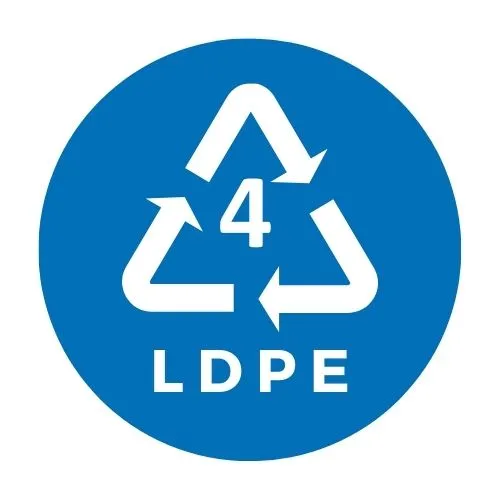

This polyethylene can stretch several times its original length without breaking or tearing.
The elasticity of LDPE makes it flexible enough to use as a food container or plastic wrap.
Because of its ability to stretch, this type of polyethylene is ideal for making film products like plastic wraps, garbage bags, plastic bags, milk cartons, juice cartons, bubble wraps, plastic containers like cups, and take-out containers.
Type 4 plastic containers are less tolerant to heat and are not microwave-safe.
Type 5: Polypropylene
Polypropylene (PP) is a highly versatile material that can be molded into various shapes and sizes to suit multiple applications.
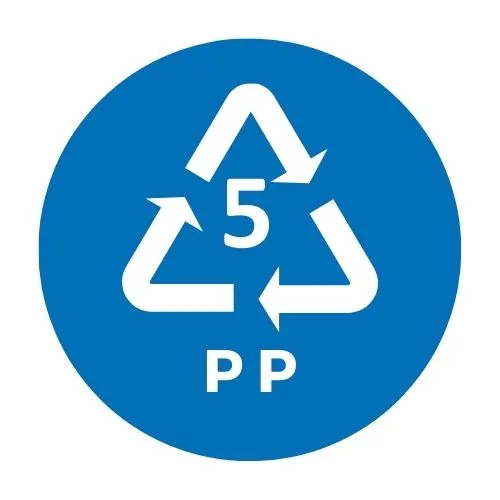

It is the second most used thermoplastic polymer in the world.
It has excellent resistance to heat and chemicals, making it suitable for many industrial uses.
It’s also highly resistant to heat, abrasion, and impact damage, making it useful in situations where there’s a risk of either being scraped or dropped.
Most commonly, polypropylene is used for packaging, textiles, and cable insulation.
PP can be converted into products such as rope and fishing lines, bottles, carpets, plastic bags, toys, pipes, electrical insulation, and more.
It is also used to manufacture pipes and automotive parts, such as bumper bars, bumpers, headlamp lenses, sheets, rods, roofing tiles, and siding panels because it does not rust when exposed to moisture as steel does.
Since PP is highly heat resistant, it is the safest among all others and can be used in the microwave for heating and reheating as it does not leach chemicals into the food.
Do check the Type 5 sign on the plastic container or manufacturer’s guidelines before putting the container in the microwave. It’s safer that way.
Type 6: Polystyrene
Polystyrene (PS) is made by polymerizing styrene monomers into poly(styrene), also known as Styrofoam.
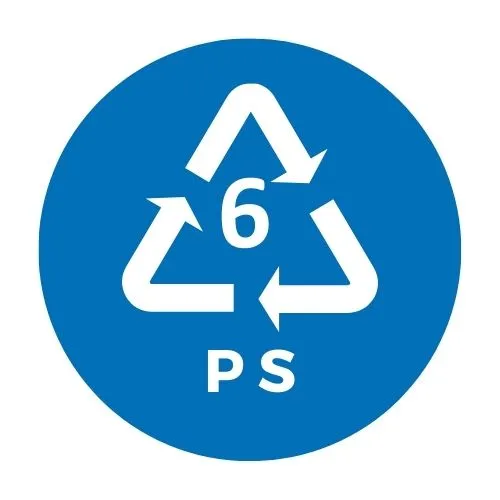

Polystyrene is a foamy plastic material used in many different applications due to its cost-effectiveness and versatility.
This plastic has many uses in packaging since it resists moisture and heat.
Polystyrene foam (Styrofoam) is used as an insulation material in thermal shipping containers as well as packing peanuts, egg cartons, electronic devices like televisions, and computers to provide cushions and used to pack fragile items during shipping.
It is also used as a take-out container and for serving hot beverages since it keeps food and drinks warm.
But this does not mean that Polystyrene is microwave safe. Eating and drinking hot food items in a Styrofoam container release Styrene in the food which is carcinogenic and should be avoided.
So never put Type 6 plastic containers in the microwave.
If you want to know more, check out our article Can You Put Styrofoam In The Microwave.
Type 7: Other
Plastic Type 7, also referred to as polycarbonate, nylon, or bioplastic, comes under this category.
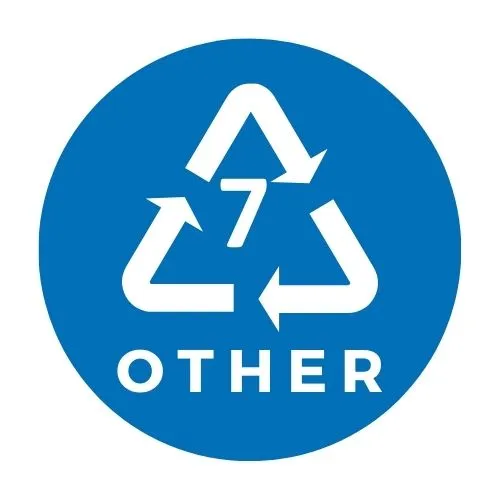

It is used in many applications, including electronics (computers, cell phones, radios, and televisions), automotive (bumpers and interior components, dashboards, instrument panels), construction (pipes and ductwork), medical devices (syringes and IV bags), 3D printing, water bottles, baby bottles, canned food jars, etc.
Type 7 plastic containers are highly toxic and should not be used in the microwave at all.
If possible, avoid drinking or consuming food in these types of plastic containers as they contain BPA (Bisphenol A) that migrates into the food, making it toxic and carcinogenic.
Can I use plastic containers in the microwave?
Plastic is made from different types of materials, including polypropylene, polystyrene, and polyethylene (plastic).
Polypropylene (PP or Type 5 plastic containers) is the safest to use for reheating food inside the microwave.
This type of plastic does not contain BPA (bisphenol-A), has high resistance to heat, and hence is safe to use.
But remember that even though your plastic containers are labeled as “microwave-safe”, it’s best to avoid using them inside the microwave.
This is because the toxicity levels in polypropylene plastic containers vary for every manufacturer according to a study, so when exposed to high heat, your plastic container can release harmful chemicals into your food.
Also, plastic wears out when exposed to heat frequently, and this can also leach chemicals into your food.
So avoid using old or cracked plastic containers in your microwave.
Instead, transfer food to microwave-safe glass or ceramic containers for heating or reheating your food.
What will happen if I use plastic in the microwave?
Plastic containers contain BPA (Bisphenol A) and Phthalates (used as a plasticizer to make plastic flexible), which are known to disrupt hormones and cause reproductive problems.
According to a study by MDPI, all PP or type 5 plastic containers or microwave-safe plastic containers, whatever you call them, contain Phthalates which may leach into your food when used repeatedly in the microwave.
This is because plastic deforms every time you expose it to heat and becomes more and more harmful to your health if you keep using it.
So avoid using plastic in the microwave altogether.
Can I put plastic Tupperware in the microwave?
Most Tupperware plastic containers are labeled as microwave-safe.
But this does not mean you should use it inside the microwave for heating and reheating your food.
As mentioned earlier, even though your Tupperware is microwave safe, repeated and prolonged exposure to heat deforms the plastic and makes it easy for chemicals to leach into your food.
It’s never a good idea to heat food in any plastic containers. Always use glass or ceramic containers for microwaving.
How long can I microwave food in a plastic container if I have to?
Well, sorry to disappoint you but microwaving food in a plastic container, even for 5 or 10 seconds, is bad for your health.
So there is no definitive answer to this. It’s a big no-no from my end and I would not recommend it.
Will I get cancer by microwaving in plastic containers?
According to Dr. Jenny Permuth, assistant member of Moffitt’s Cancer Epidemiology Program, microwave-safe plastic containers and wraps do not cause cancer when used in the microwave.
But prolonged use of plastic containers in the microwave does affect your health by disrupting hormones and the reproductive system, as per a report published by PubMed Central.
How to know if a plastic container is microwave safe?
Microwave-safe plastic containers have a special symbol on them.
The most common one is a small number 5 in the triangle with a circle around it.
This symbol means that the plastic container can be used for reheating food in the microwave.
If there’s no symbol on the container, don’t use it in the microwave.
You can also check the manufacturer’s instructions to see if they recommend using their plastic containers in the microwave.
If you’re still not sure, don’t risk it!
Can I put plastic bowl in the microwave?
As discussed earlier, avoid using anything made of plastic in the microwave to reheat your food.
It doesn’t matter whether your plastic plate, cup, bowl, or any utensils is microwave-safe. Plastic deteriorates faster when exposed to heat frequently and can migrate chemicals into your food, increasing health risks.
Can I put food covered with plastic wrap in the microwave?
As long as the plastic wrap is labeled microwave-safe and does not touch your food, it can be used in a microwave oven, according to the U.S. Department of Agriculture.
Also, make sure you transfer the food into glass or ceramic utensils and do not use take-out containers or plastic bags to reheat your food.
Do not use cheap plastic wraps or cling wraps in the microwave; it will melt and get mixed into your food, making it toxic.
Can I microwave black plastic containers?
The color does not matter. Anything made of plastic should be avoided in the microwave.
So, microwaving food in black plastic containers or any take-out container is a big No.
Can I keep the steel cup on a plastic plate in a microwave?
Well, it’s a deadly combination. Never use steel cups, plates, or anything made of steel in the microwave oven as they reflect electromagnetic waves, which can cause a spark or fire and damage your microwave.
Coming to the plastic plate, if it’s not microwave-safe, it will melt, causing burns or injuries.
To know more about why stainless steel should not be put in the microwave, check out our article Can I Use Stainless Steel In Microwave Oven?
What to do if a plastic container melts while microwaving food?
If your plastic container melts in the microwave, it can be hazardous to your health as well as the microwave.
When the plastic melts, it’s highly flammable and can cause a fire.
If you see smoke or flames coming from your microwave while using a plastic container, turn off the oven immediately.
Make sure to turn on the exhaust and open doors and windows to allow plastic fumes to escape.
The fire will burn itself out. If it doesn’t grab a fire extinguisher to put off the fire.
Don’t use your microwave. Call a professional to assess the damage to make sure your microwave is safe to use again or needs its components replaced.
The melted plastic contains harmful chemicals that could have migrated into your food.
Do not consume your food by separating the melted plastic from your food.
It’s best to throw it away to avoid any health risks.
Final Thoughts
We hope that now you have a clear idea that plastic should not be used in the microwave.
Even microwave-safe plastic containers deform when exposed to heat regularly and can release chemicals into your food.
So use only glass or ceramic utensils to reheat your food.
If you are wondering what other containers to avoid in the microwave, check out our article on 15 Materials You Should Never Put In Microwave.
Read Next

